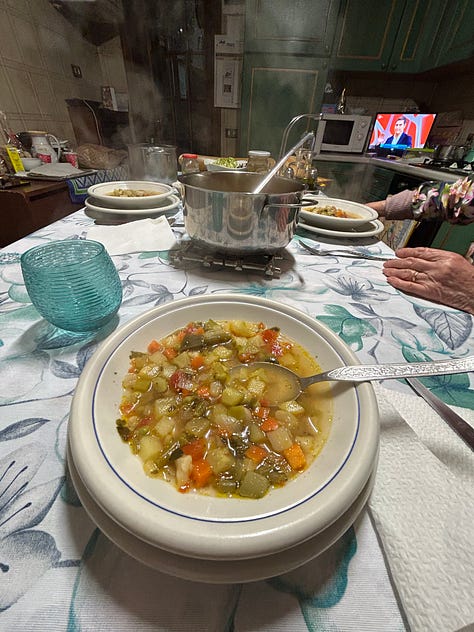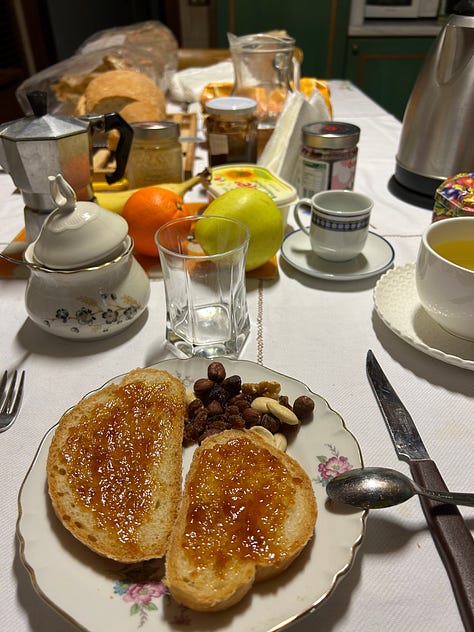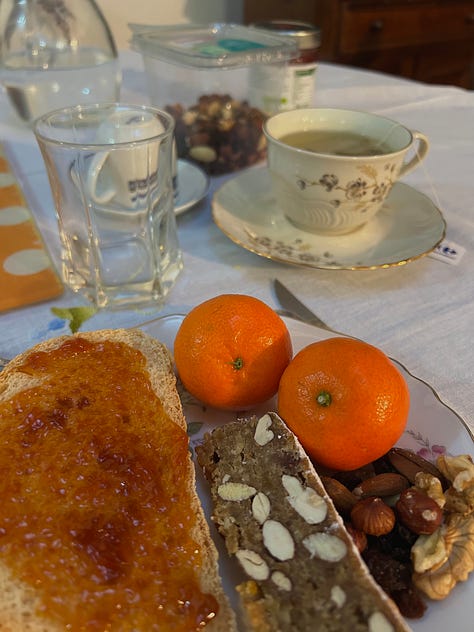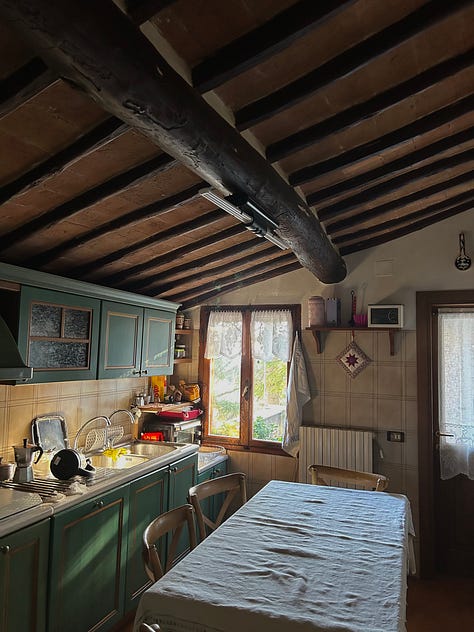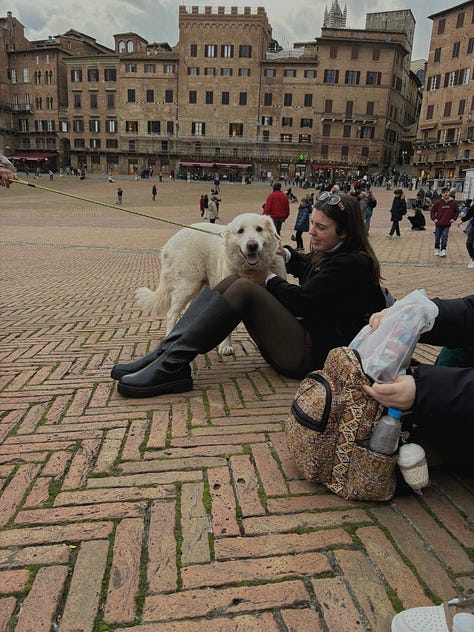A Gastronomic Tale of Siena, Italy
In the winter of 2024, I paid a visit to Siena Italy where I took a course on Italian food culture and gastronomy. However, most of my learning came from my 80 year old host mother, Anna.
I mentally prepared myself to consume an abnormal amount of carbs before embarking on my three-week adventure to Siena, Italy. My prior knowledge of Italian food was limited to pizza, pasta, and paninis. I knew to say “delizioso” and to throw around the typical Italian pinched-fingers hand gesture, yet that was the extent of my Italian expertise.
My Americanized perspective of Italian culture prompted inevitable culture shock, as my host family did not use the hand gesture as often as I was expecting. Not to mention, there were not as many mustaches as I had hoped for. Perhaps I had played too much Super Mario Bros. in my youth.
Upon my arrival, I was looking forward to ending my 32-hour wakefulness streak in some nice Italian linen bed sheets. However, my host family kindly prepared a four-course meal, which I was willing to delay my slumber for (reluctantly). Fighting back the urge to fall asleep at the table, I began to eat the chickpea broth and homemade croutons Marcello and Anna had prepared. Suddenly, I was filled with adrenaline, knowing that I would be eating well for the next few weeks. My insane passion for all things culinary and gastronomy had been tapped at that moment, as I felt like Remy the rat when he first tasted the delectable strawberry and cheese combo.
After the soup course, I was served a salad of cauliflower, fennel, potatoes, and radicchio. My host mother, Anna, ensured there was no shortage of olive oil (or liquid gold) on my salad. Back home, this would have been a questionable amount of olive oil, and I was somewhat apprehensive. Every glug that exited the bottle made me a tad more uneasy. Yet, here in Italy, I could have drank a bottle of oil and felt great, hence why I was willing to risk my luggage being overweight with multiple bottles of oil.
I was next presented with a fruit basket filled with fresh clementines, apples, and bananas. I picked a clementine, relieved I was not offered to douse it in olive oil. Finally, dessert was last. Anna baked a panforte, which I had learned through our Google Translate conversation,
is her favorite dessert. Despite that, the next events that unfolded contradicted her statement about her favorite dessert. I was unsure if my record-breaking wakefulness streak had me hallucinating, but both my host parents were eating the parchment paper the cake was on, instead of the cake. Was I supposed to be eating the paper? Was the paper the dessert instead of the cake?
Should I go to bed? I should. These questions were circling my mind, but I made sure not to let my internal confusion show outwardly. I used my critical thinking skills and decided to cut a slice of the panforte, sighing with relief when my parents did not judge. I made a good call on that one, as the panforte was unlike anything I'd ever eaten before, similar to the chickpea broth.
After the ever-so-dramatic dinner, I slept like a baby, letting my anxious mind rest as I had a whole new adventure ahead of me, called breakfast. “Buongiorno!” was yelled at me, to which my instinctive reaction was to smile and give a thumbs-up. Secretly opening Google Translate, I learned buongiorno means “good morning” and not “why didn’t you eat the parchment paper last night?” Phew… I should also mention that upon further research, the parchment used in Italy is rice paper, completely edible. Breakfast consisted of a lot of small items that I could pick at with no rush. This included a spread of hazelnuts, walnuts, clementines, bananas, fresh bread, homemade prune marmalade, cavallucci cookies, tea, and espresso. These tapas fascinated me, as I’ve never considered a small-plates concept for just an individual. The cavallucci cookies that Anna had baked were not too sweet, and were delicious dipped in the espresso. This is a traditional Italian cookie with dried fruit and walnuts, dusted in powdered sugar. I asked Anna for the specific ingredients of the cookies, as I’d love to replicate them at home. To my surprise, Anna communicated that the cookies contained one ingredient that shocked me more than the plethora of olive oil, and more than the edible parchment paper… seahorses… I smiled at my phone, as our conversation was through the translator. I asked for some clarification, as I was unaware that Italy’s vast seafood scene had expanded to include seahorses. We both shared a good laugh, as Anna explained to me that “cavallucci” directly translates to “little horses,” which may have confused the robot. Once again relieved, I ate my cookies in peace before heading to school.
Over the course of the next few weeks, I took a course called “Italian Cuisine: A Historical and Chemical Tour” that thoroughly explored Italian gastronomy and paid specific attention to the Mediterranean diet. We also took a cooking class, where we learned how to make ravioli, gnocchi, and pici pasta—this was a highlight of the trip, as I find this type of intensive, manual cooking to be therapeutic. Although the classroom taught us valuable knowledge, the person I learned the most from was Anna. She taught me how to whip up the perfect polenta, showed me the potential of fennel, and always had love as the first ingredient.
Siena, with its steep hills, windy alleys, and many pettable dogs, has been the perfect prelude to my journey as a culinary student. I left with a suitcase heavier with bottles of olive oil, but even more so, with a heart full of gratitude and a soul inspired to explore the world of gastronomy. Although we did not speak the same language, we found commonality in food, as I was able to understand and appreciate the cultural roots of their cuisine. Grazie mille, Anna e Marcello, for not just feeding me, but also my dreams.
